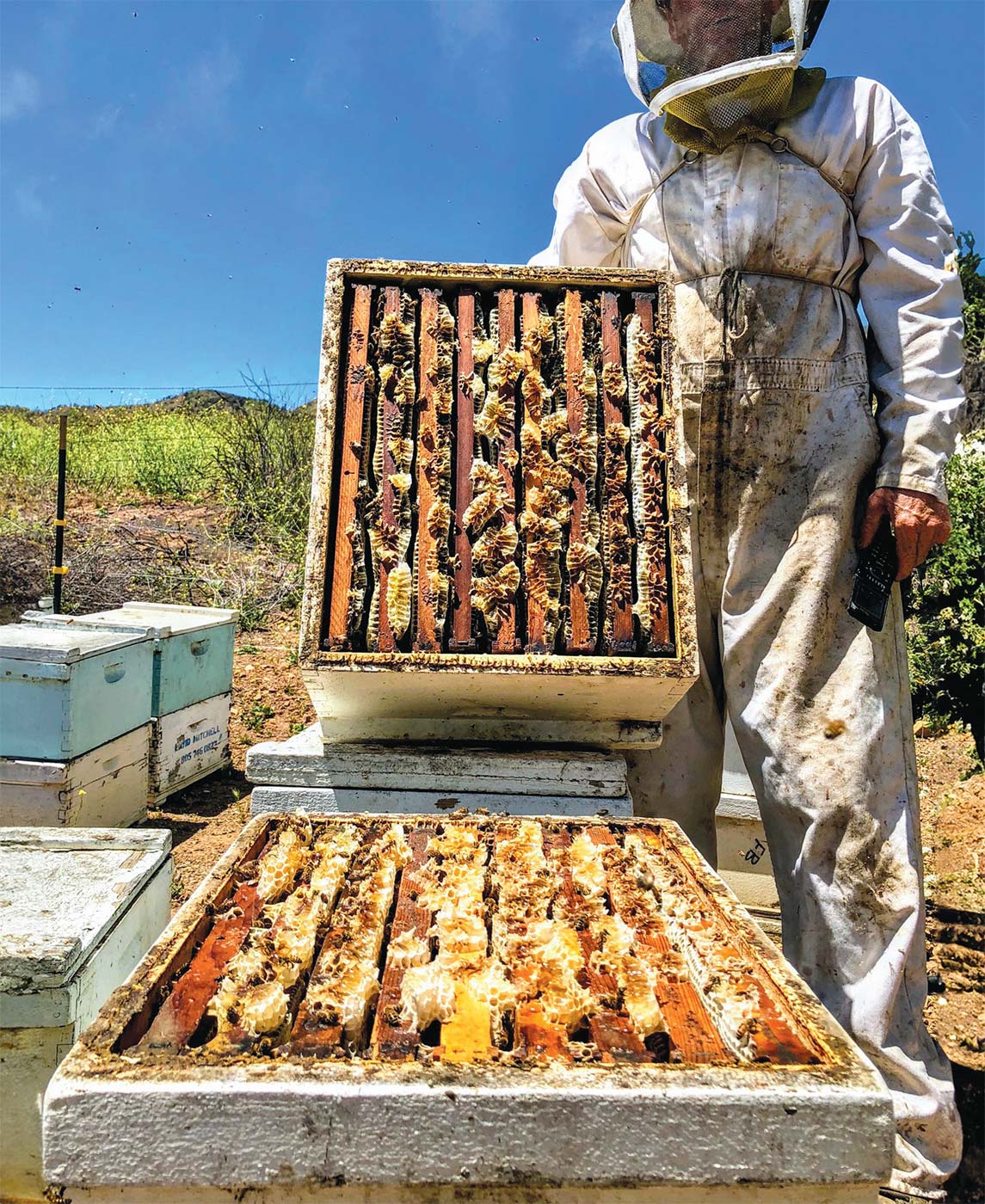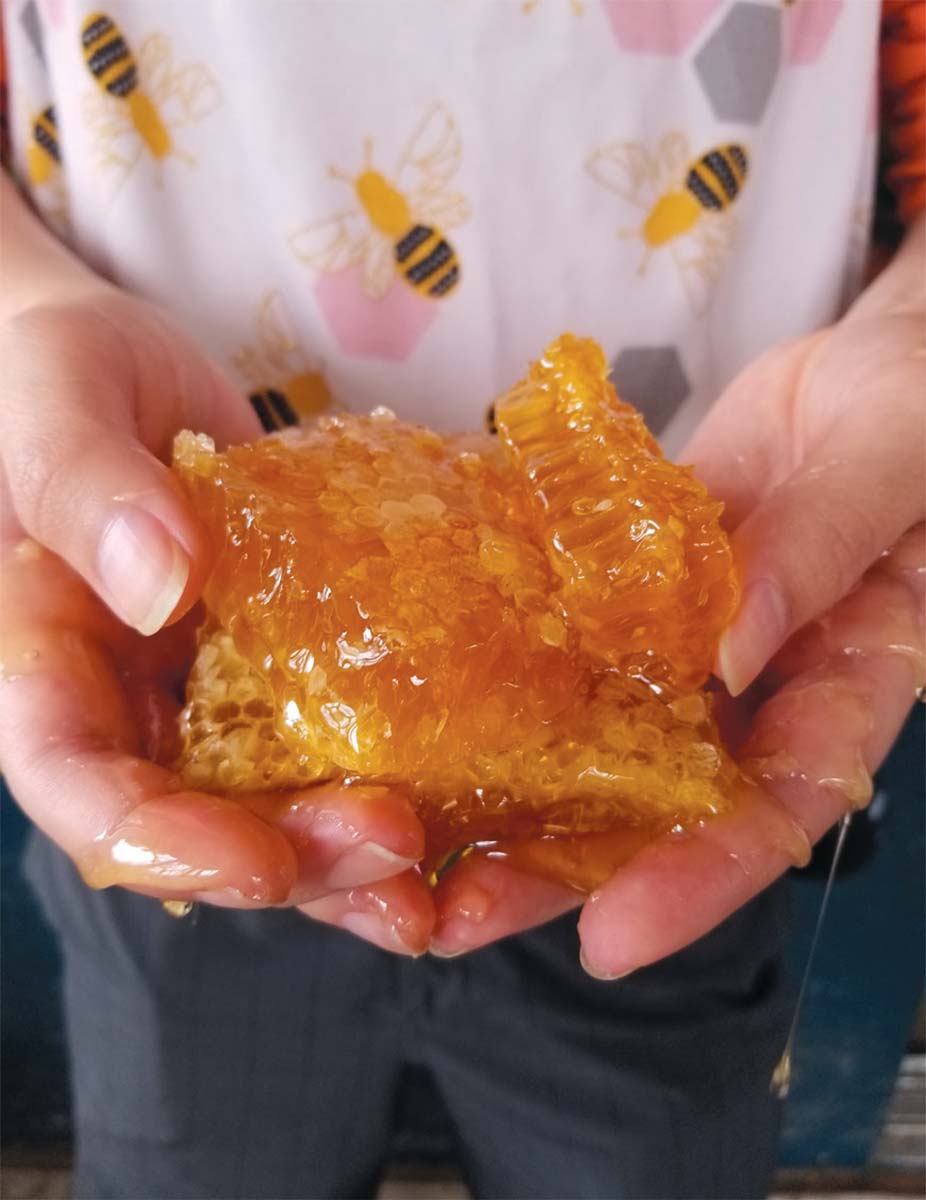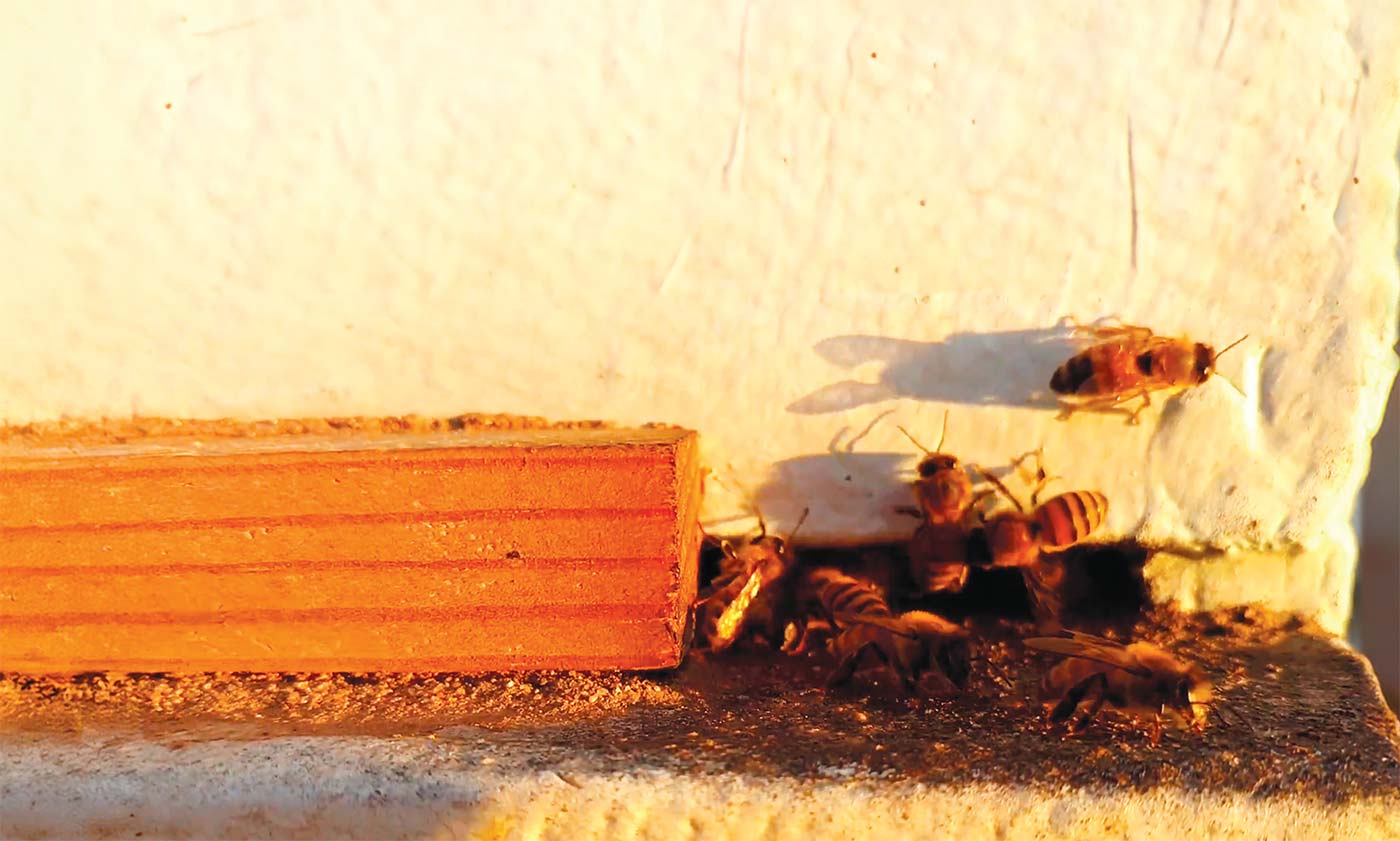What's the Buzz with Backyard Beekeeping?
We are in a golden age of beekeeping, with access to modern tools and information making the practice accessible to anyone regardless of background.
Your best bet for getting started is to join a beekeeping group in your area. Blue Ridge Honey has monthly beekeeping group meetings at their facility on Tower Square in Ventura. Call for information: 805-941-3777.
Before beginning any backyard beekeeping, check the county and your city manager to see if it’s legal to have a bee colony on your property. Do plenty of research to fully understand all the regulations and legal issues surrounding owning and managing a beehive.
According to Ventura County Code Section 8107-2.6.2 it is legal to have up to four colonies on a lot of 10,000 square feet or more. There are a host of other requirements so I recommend calling the county (the Apiary Inspector is at 805-388-4222) to avoid issues in the future.
GETTING YOUR BEES
To get started, you’ll need just two things: some bees and some basic equipment.
There are many subspecies of the Western honey bee (Apis mellifera), each with benefits and drawbacks. Picking the right bee for you is a huge part of getting started on the right foot.
My personal recommendation would be the New World Carniolan, an incredibly hardy bee that is also very gentle. Some of their greatest traits include their pronounced ability to survive difficult winters and the ability for a rapid spring buildup.
If you’re going to start beekeeping, I suggest buying your bees from a reputable source, either a local beekeeper you know or a commercial company like Dadant or Mann Lake. Bees are capable of hybridizing with other subspecies and in Ventura County we have a healthy population of the African subspecies. As a result, wild colonies can become quite aggressive once established.
EQUIPMENT NEEDS
Beekeeping is an entire world in and of itself, with so many unique and interesting tools that vary among climates, cultures and personal preferences. The bare minimum a new beekeeper might need would be a smoker, a protective suit, a hive tool and some bee boxes with frames to house your bees.
The hive tool is a multi-functional tool used to open the hive, lift frames, scrape wax and more. You’ll need it to get started, but likely find it to be invaluable long term. There are several styles, sizes and uses to choose from, so spend a little time looking into them before deciding which one to buy.
Equipment can be very expensive but there are plenty of workarounds and practices to make sure you get the most bang for your buck. For example, you could share some of the equipment with another amateur beekeeper, or rent a smoker or suit when it is needed.
The bees are impartial as to the cost of your equipment, so long as your hive boxes keeps water out and heat in. New or used equipment (boxes, smokers, suits, hive tools) works equally well, however I would recommend using new frames as bees often prefer to build their own combs.

SETTING UP YOUR HIVES
The best time to order bees is in the fall, so they arrive in the spring. Spring is the best time to begin, when there are plenty of nectar and pollen resources available for the bees and when colonies grow the fastest. Make sure to have a spot picked out for your new bees, preferably an area with lots of direct sun, a nearby water source and space in front of the hive entrance to allow for a clear flight path.
Once your bees are established in their new home be sure to assess them about every two weeks. When the colony is getting close to filling their current box, add another on top to give them room to grow and prevent the hive from splitting or “swarming”—a natural process that occurs most often when a colony runs out of space. Bees will naturally store honey in the upper boxes, which allows heat from the lower brood chamber—where the eggs, larvae and pupae develop—to rise and keep it liquid (and also conveniently makes it very easy to harvest honey)! Once the box is full and capped, meaning the honey is covered in wax, it is ready to harvest and you are on your way to liquid gold!

HONEY, YOU’RE THE REAL DEAL
BY SARENE WALLACE
Not all honeys are created equal. To make sure you’re purchasing 100% real honey, follow these tips:
Buy Local: Purchase honey from a local beekeeper or farmers’ market vendor. Talk to them and you’ll learn a lot about the honey and where the bees foraged. (This honey likely will be more flavorful, too.)
Just One: Honey should be the only ingredient. Stay away from any honey that contains high-fructose corn syrup, maltose syrup, glucose or fructose.
Good Words: “Raw” and “unfiltered.” This honey will have more health benefits than processed honey.
Organic Truth: If honey is labeled “certified organic,” it was imported and certified by the country of origin. (The USDA cannot certify honey as organic.)
Not Ultra: Stay away from honey that’s “ultra-filtrated.” In this process, honey is heated and forced through tiny filters to catch the pollen.
Certified: True Source Honey is a nonprofit organization that grants honey the “True Source Certified” label. This means the honey can be traced from hive to home and has been tested for authenticity and third-party audited.
RESOURCES
WHERE TO FIND EQUIPMENT AND BEES IN VENTURA COUNTY AND NEARBY:
Bryan’s Bees
www.BryansBeesVentura.com
Mission Beekeeping
www.MissionBeekeeping.com
The Valley Hive (Chatsworth)
www.TheValleyHive.com
Santa Barbara Beekeepers Association
www.sbba.org
WHERE TO BUY HONEY IN VENTURA COUNTY:
Blue Ridge Honey, Ventura
Bennett’s Honey, Fillmore
Heavenly Honey, Ojai
Heritage Honey, Ventura
Ojai Community Farmers’ Market
Ventura County Certified Farmers’ Markets, Ventura, Thousand Oaks
Camarillo Farmers’ Market
Simi Valley Farmers’ Markets
Underwood Family Farms
THE BEE LINE
You don’t have to be a beekeeper to support bees. Los Angeles beekeeper David Bock put together this list of ways you can be a honey and help bees thrive.
See a Bee, Save a Bee: If you discover a swarm of bees on your property, call a live bee remover instead of an exterminator. In Ventura County some options are Ventura Bee Rescue, 805-620-7290; Sunshine Honey and Bee Removal, 805-765-1450; or Bryan’s Bees, 805-557-8091.
Put the Spray Away: When bees encounter pesticides while foraging, they bring the poison back to the hive. Too often, the result is the death of most or all of the bees in the colony.
Bloom Where You’re Planted: Provide pollen and nectar for bees and other pollinators by planting California Buckwheat (Eriogonum fasciculatum) and Black Sage (Salvia mellifera) or the perpetually blooming Tuscan Blue Rosemary (Rosmarinus officinalis “Tuscan Blue”).
Also consider non-native trees like eucalyptus and Sydney golden wattle (Acacia longifolia). These Southern-hemisphere species bloom in the winter months, providing bee forage when it’s needed most.
Hire a beekeeper: In the East County, Phoebe Piper runs The Hive Tribe, a local business that will set up and maintain the hives for you in your backyard. TheHiveTribe.com
Call a Sideliner: If the prospect of hosting thousands of bees in your yard is daunting, consider sponsoring someone else’s hives. Small-scale professional beekeepers, known as “sideliners,” will gladly exchange honey and guided apiary tours in exchange for a monthly donation. Contact David Bock at david@buzzedhoneys.com for details.




